| Date | Text | |
|---|---|---|
30 Nov 1964

NML Cygni |
NML Cygni (astronomy and space ) Discovery of NML Cygni, a red hypergiant and the largest star known, at about 1,650 times the Sun's radius. |
|
30 Nov 1964
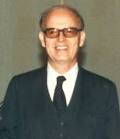
Emile Zuckerkandl |
Emile Zuckerkandl (biology) Emile Zuckerkandl and Linus Pauling name their concept of the molecular clock. |
|
30 Nov 1964
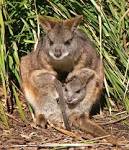
Parma wallaby |
Parma wallaby (biology) The Parma wallaby, thought for around 70 years to be extinct, is rediscovered on Kawau Island (near Auckland). |
|
30 Nov 1964
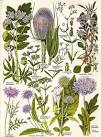
W. Keble Martin |
W. Keble Martin (biology) W. Keble Martin publishes The Concise British Flora in Colour. |
|
30 Nov 1964
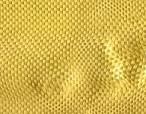
Kevlar |
Kevlar (chemistry) Kevlar high-strength para-aramid synthetic fiber is developed by Stephanie Kwolek at DuPont. |
|
30 Nov 1964

Peter Hirsch |
Peter Hirsch (chemistry) Peter Hirsch, Archibald Howie, Robin Nicholson, D. W. Pashley and Michael J. Whelan publish Electron Microscopy of Thin Crystals. |
|
30 Nov 1964

Ralph Lapp |
Ralph Lapp (history of science) Ralph Lapp publishes The New Priesthood: The Scientific Elite and the Uses of Power in the United States. |
|
30 Nov 1964

James Ax |
James Ax (mathematics) James Ax and Simon B. Kochen make the first proof of the Ax–Kochen theorem. |
|
30 Nov 1964

Lotfi Zadeh |
Lotfi Zadeh (mathematics) Lotfi Zadeh develops fuzzy logic. |
|
30 Nov 1964

paediatrician |
paediatrician (physiology and medic) English paediatrician Harry Angelman first describes Angelman syndrome. |
|
30 Nov 1964
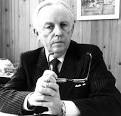
Frank Pantridge |
Frank Pantridge (physiology and medic) Frank Pantridge installs the first portable defibrillator, in a Belfast ambulance. |
|
30 Nov 1964

Konrad Lorenz |
Konrad Lorenz (psychology) Konrad Lorenz publishes Evolution and Modification of Behavior. |
|
30 Nov 1964

Order of Merit |
Order of Merit (awards) Order of Merit: Dorothy Hodgkin |
|
01 Jan 1965

United Kingdom |
United Kingdom (technology) Bryan Whitby and S. C. Cummins file a United Kingdom patent application for mobile ice cream producing equipment with the soft serve units powered off the ice cream van's drive mechanism (rather than a separate generator), which becomes a global standard. |
|
04 Feb 1965

Trofim Lysenko |
Trofim Lysenko (biology) Trofim Lysenko is removed from his post as director of the Institute of Genetics at the Academy of Sciences in the Soviet Union and Lysenkoist theories subjected to criticism. |
|
20 Feb 1965

Ranger 8 |
Ranger 8 (astronomy and space ) Ranger 8 crashes into the Moon after a successful mission of photographing possible landing sites for the Apollo program astronauts. |
|
22 Mar 1965

Digital Equipment Corporation |
Digital Equipment Corporation (computer science) Digital Equipment Corporation launch the 12-bit PDP-8, the first successful commercial minicomputer, which will sell more than 50,000 systems, the most of any computer up to this date. |
|
23 Mar 1965
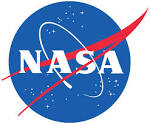
NASA |
NASA (astronomy and space ) NASA launches Gemini 3, the United States' first two-person space flight (crew: Gus Grissom and John Young). |
|
30 Mar 1965

Philip Showalter Hench |
death Philip Showalter Hench Died 30 Mar 1965 at age 69 (born 28 Feb 1896). American physician who was one of the leaders in American rheumatology. He shared the Nobel Prize for Physiology or Medicine in 1950 for discoveries relating to the hormones of the adrenal cortex, their structure and biological effects (with Edward C. Kendall and Tadeus Reichstein of Switzerland). In 1948, Hench was working at the Mayo Clinic, Rochester, Minnesota. He noticed that during pregnancy and in the presence of jaundice the severe pain of arthritis may decrease and even disappear. With Kendall, he successfully applied an adrenal hormone (later known as cortisone) in the treatment of rheumatoid arthritis. |
|
19 Apr 1965
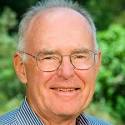
Gordon Moore |
Gordon Moore (computer science) Gordon Moore describes the exponential growth trend in computing power which will become known as Moore's law. |
|
25 Apr 1965

Plastic bag with handles patent |
Plastic bag with handles patent In 1965, a U.S. patent for the design of a plastic bag with handle was issued to Swedish inventor Sten Gustav Thulin, assigned to the Celloplast company (No. 3,180,557, filed 10 Jul 1962). The design is the widely-used, disposable, plastic “T-shirt” grocery bag. The bag is made from a continuous-feed of seamless tubular weldable plastic material (such as polyethylene), pleated in a flat state. To make the bag, transverse seams are welded, a segment is punched out to form the top handles portion, and separated at the transverse seams. Celloplast thrived until Mobil overturned the patent (1977). H. Gordon Dancy refined the design, assigned to Sunoco, so that a bag pack would hang on a frame, to be more easily opened and filled (U.S. patents 4,480,750 issued 6 Nov 1984; D287,572 on 6 Jan 1987). |
|
21 Jun 1965
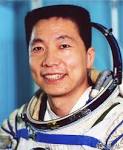
Yang Liwei |
birth Yang Liwei Yang Liwei, Chinese astronaut. |
|
07 Jul 1965

First successful thumb replantation |
First successful thumb replantation In 1965, the first successful surgery to replant a completely amputated thumb was accomplished by Shigeo Komatsu and Susumi Tamai. They used a surgical microscope to operate on a 28-yr-old man's thumb, which had been severed at the metacarpophalangeal level. They published their work in the Journal of Plastic and Reconstructive Surgery in 1968. The surgeons had been working since 1959, with “many failures.” The way had been paved by Jacobson and Suarez who, in 1960, achieved anastomoses of 1mm diam. vessels under an operating microscope. A medical writer suggested the availability of 8/0 monofilament suture was the key to success by Komatsu and Tamai.. By 1992, they had replanted 331 digits at the Orthopaedic Clinic of Nara Medical University Hospital, Kashihara, Japan. |
|
28 Aug 1965

Giulio Racah |
death Giulio Racah Giulio Racah (born 1909), Israeli physicist. |
|
29 Aug 1965

Astronaut speaks to aquanaut |
Astronaut speaks to aquanaut In 1965, astronaut Gordon Cooper in orbit 100 miles above the Earth aboard Gemini 5 held a conversation with aquanaut M. Scott Carpenter in Sealab II which was 205 feet below the surface of the Pacific Ocean. It was was first time an astronaut in space spoke with an aquanaut. Gemini 5 splashed down later in the day. |
|
04 Sep 1965

Albert Schweitzer |
death Albert Schweitzer Albert Schweitzer (born 1875), Alsatian medical missionary. |
|
20 Sep 1965
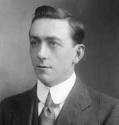
Arthur Holmes |
death Arthur Holmes Died 20 Sep 1965 at age 75 (born 14 Jan 1890). English geologist and petrologist was one of the foremost geologists of the twentieth century, who made major contributions to the geochronology of Africa, the genesis of igneous rocks, and physical geology. He developed a method of determining the age of the earth based on measurement of uranium decay in igneous rocks (which invalidated William Thomson Kelvin's hypothesis that the earth's age can be established on the basis of the planet's cooling from a initial molten state). Holmes' method proved to be remarkably accurate and laid the foundation of isotope geology. This was the first quantitative time scale for geology based on measuring the radioactive constituents of rocks. |
|
11 Oct 1965
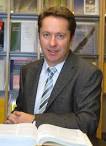
Juan Ignacio Cirac Sasturain |
birth Juan Ignacio Cirac Sasturain Juan Ignacio Cirac Sasturain, Spanish physicist. |
|
12 Oct 1965

Paul Hermann Müller |
death Paul Hermann Müller Paul Hermann Müller (born 1899), Swiss chemist, winner of the Nobel Prize in Physiology or Medicine in 1948. |
|
11 Nov 1965

Ronald Hatton |
death Ronald Hatton Ronald Hatton (died 1886), English pomologist. |
|
16 Nov 1965

Venera program |
Venera program (astronomy and space ) Venera program: The Soviet Union launches the Venera 3 space probe from Baikonur, Kazakhstan toward Venus. (On March 1, 1966 it becomes the first spacecraft to reach the surface of another planet). |
|
26 Nov 1965
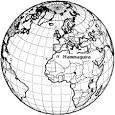
Hammaguira |
Hammaguira (astronomy and space ) At the Hammaguira launch facility in the Sahara Desert, France launches a Diamant-A rocket with its first satellite, Asterix-1 on board, becoming the third country to enter space. |
|
05 Dec 1965

Joseph Erlanger |
death Joseph Erlanger Died 5 Dec 1965 at age 91 (born 5 Jan 1874). American physiologist who discovered that fibres within the same nerve cord possess different functions. In 1910 he accepted the chair of physiology at Washington University in St. Louis, which he held until his retirement in 1946. While his department became one of the major research centers in physiology in America. Erlanger continued his work on cardiovascular physiology. During WW I, he carried out research on the problem of shock. In 1921 he shifted his interests to neurophysiology, and began joint work, with colleague Herbert Gasser, on the amplification and recording of nerve action potentials with the cathode ray oscilloscope, for which they were awarded the Nobel Prize for Physiology or Medicine in 1944. |